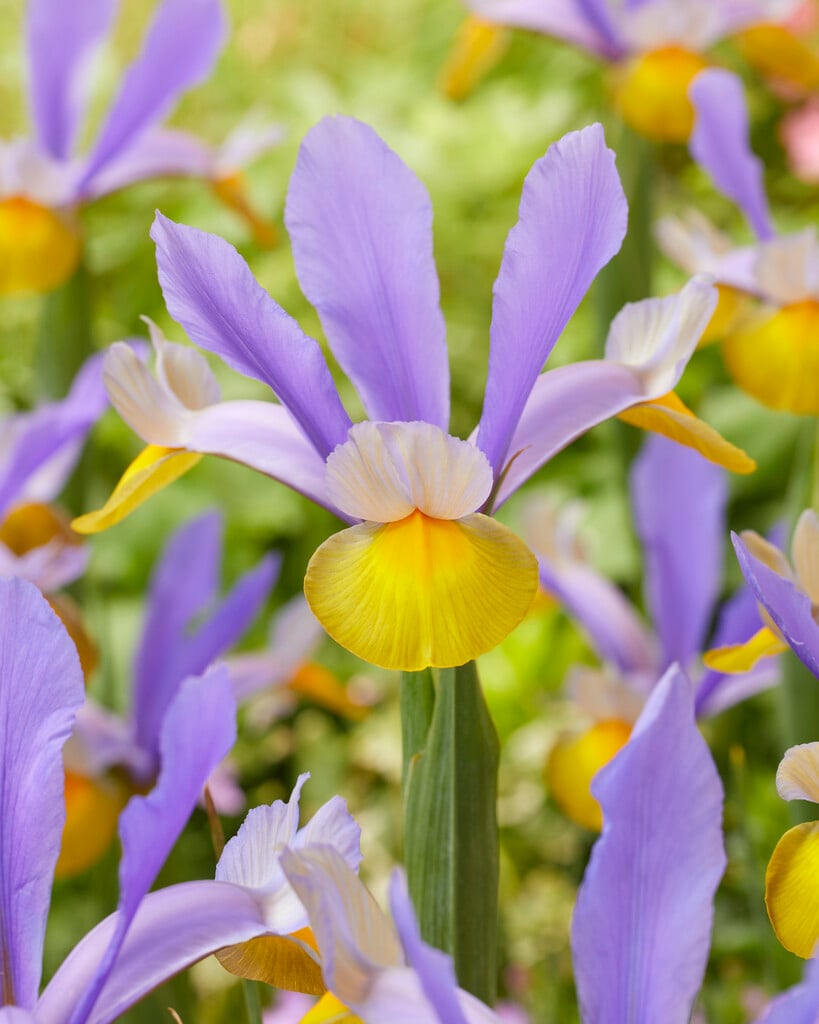Iris 'Frans Hals' (Dut)
iris 'Frans Hals'
A bulbous perennial, growing to 60cm tall, with upright, strap-like, green leaves and tall, sturdy stems bearing striking flowers with deep violet-purple standards and golden-yellow falls. Perfect for cut flowers and container growing
Size
Ultimate height
0.5–1 metresTime to ultimate height
2–5 yearsUltimate spread
0.1–0.5 metresGrowing conditions
Moisture
Well–drainedpH
Acid, Alkaline, NeutralColour & scent
| Stem | Flower | Foliage | Fruit | |
| Spring | Purple Yellow | Green | ||
|---|---|---|---|---|
| Summer | Purple Yellow | Green | ||
| Autumn | Green | |||
| Winter |
Position
- Full sun
Aspect
East–facing or South–facing or West–facing
Exposure
Exposed or Sheltered Hardiness
H5Botanical details
- Family
- Iridaceae
- Native to GB / Ireland
- No
- Foliage
- Deciduous
- Habit
- Columnar upright
- Potentially harmful
- Harmful if eaten. Wear gloves and other protective equipment when handling. Pets: Harmful if eaten. For further information and contact numbers regarding pets, see the HTA guide to potentially harmful plants
- Genus
Iris may be rhizomatous or bulbous perennials, with narrow leaves and erect stems bearing flowers with 3 large spreading or pendent fall petals, alternating with 3 erect, often smaller, standard petals, in late winter, spring or early summer
- Name status
Accepted
- Horticultural Group
- Dutch Iris are herbaceous bulbous perennials with narrow, channelled leaves and blue yellow or white flowers in late spring and early summer
How to grow
Cultivation
Grow in any moderately fertile, neutral to alkaline, well drained soil in full sun. Plant bulbs at twice their height in late summer or early autumn and feed with a high potash fertiliser after flowering. See bulb iris cultivation for more information
Propagation
Propagate by division, separating bulb offsets from midsummer to early autumn
Suggested planting locations and garden types
- City and courtyard gardens
- Coastal
- Cottage and informal garden
- Patio and container plants
- Cut flowers
- Flower borders and beds
Pruning
Cut back old flower stems after flowering and remove dying foliage in autumn
Pests
Diseases
May be susceptible to leaf spots, ink disease, rust diseases, bulb rot and viruses; see Iris diseases for more details
Love gardening
Sign up to receive regular gardening tips, inspiration, offers and more
View our Privacy Policy
Get involved
The Royal Horticultural Society is the UK’s leading gardening charity. We aim to enrich everyone’s life through plants, and make the UK a greener and more beautiful place.

